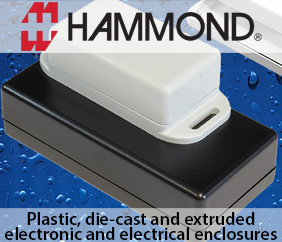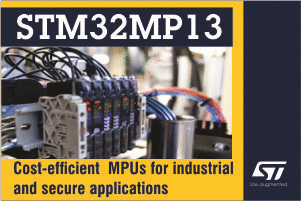Capacitive touch-sensing for home appliance applications to get innovative and classy design.
Home appliances are not just a need for the consumer. They are becoming a lifestyle product. When consumer buys any product, selection criteria of the product not only depend on the
feature set it supports, but also on how it looks. For instance, let us take an example of a refrigerator. In old models, one could hardly find any interface apart from a knob , to control the temperature and one switch, to defrost the ice. Even these two controls used to be located inside the refrigerator
and were accessible only when door is open. Today, refrigerators have a control panel which not only provides options to control the temperature and humidity using touch buttons but also, are equipped with an electronic display for menu selection and to display various physical quantities like current temperature. Similarly, majority of the home appliances, be it large appliances like air conditioner, washing machine or small ones like induction cooker, microwave oven, toaster etc. are becoming smarter and more intuitive. Figure 1(a) shows an example of a user interface with mechanical buttons and knobs to configure the parameters, on the other hand figure 1(b) shows an even more elegant user interface which employs touch buttons instead of its mechanical counter- part.
Touch-sensing based input user interface provides several advantages over mechanical button/knobs based user interface, some of them are as follows: Reliable – Touch sensing based buttons do not have any movable parts as compared to mechanical buttons, thus no wear and tear – It makes the touch sensing based UI more reliable and robust.
Zero Jitter – Since, touch sensing based buttons, unlike mechanical buttons work on change in capacitance and does not make any electrical contacts, thus do not induce jitter when the switch is pressed.
Innovative and classy design – A unique advantage of touch based buttons when compared to mechanical buttons is they can be molded into any shape, like circular, linear and even backlight enabled, and thus makes the UI look really classy and sleek. In appliances, along with a touch-based user interface, an elegant display also is needed. As feature set increases in the appliances, display shall be capable of displaying different menu options and display various values like time and temperature. So, dot-matrix LED, segment LCD or segment LED based display is required in the appliances to make product easy-to-use and to provide the classy look.
Capacitive touch-sense basics
In capacitive sensing, sensors are nothing but the traces in the PCB. Figure 2 shows the cross sectional view of a capacitive sensor board.
The sensor capacitance in the absence of the finger will be as shown in figure 3 (a). This capacitance is called parasitic capacitance (Cp). When finger touches the sensor (or comes near to sensor), it changes the sensor capacitance. It brings in another capacitance called finger capacitance (Cf) in parallel to the Cp. So, in the presence of finger, total sensor capacitance (Cx) is given by eq 1.
Cx = Cp + Cf – Equation 1
For the microcontroller to process the sensor capacitance (Cx), it is required to convert this capacitance into a digital value. This converted digital value at the start-up is used as a reference value. Based on the (varies based on technology, sensor size and other parameters) whether a finger has touched the sensor or not.
In appliances, safe operation of appliance is the first requirement. So, for capacitive sensing systems, it is very important that sensing technology must be robust enough to avoid false detection. But when water droplet is placed on the sensor, as shown in figure 4, then parasitic capacitance of the sensor will increase because water droplet increases the coupling between ground and sensor plate, which can then be detected as a finger press.
Figure 5(A) shows how water droplet will add to the capacitance of the sensor. This is not a limitation of capacitive sensing methodology but a concept of physics..
Most of the home appliances i.e. induction cooker, washing machine, refrigerator have very high probability of having water droplet on their user interface. So, it is very critical in these applications to select a touch-sense controller that can defy the basic concepts and can support water-tolerant touch sensing system.
In capacitive sensing technology, to detect finger on the sensor or to measure the sensor capacitance, sensor is switched between a reference level and GND to emulate sensor capacitance as resistance. This emulation of resistance draws current from the reference source which is then used to measure capacitance. If instead of connecting the hatched pattern surrounding the sensor to GND, it is connected to the same signal used for switching the sensor (referred as shield electrode), then because of ZERO potential difference between sensor and hatched pattern, parasitic capacitance will seize to exist. Detailed low level implementation of this technology is provided below in figure 5(B).
As can be seen that during ph1, when the sensor is connected to internal reference voltage, same reference signal is driven at shield electrode / hatched pattern (other end of Cp driven by Vref) and when sensor capacitance is connected to GND during ph2, shield electrode / hatched pattern is also driven to GND. Thus, because of the same potential between sensor pin and the surrounding hatched pattern, effect of parasitic capacitance on sensor capacitance will not be seen.
If a water droplet will fall on the sensor then additional capacitance will be added in parallel to parasitic capacitance, Cp but it won’t have any effect on sensor because Cp effect has been nullified. Figure 6 shows the cross-sectional view of senor board with water droplet.
Proximity detection
To make product more interactive proximity is another great feature that can be added in the interface. When hand approaches the control panel, backlight LEDs can be switched on or intensity can be changed. To understand how proximity works, have a look at figure 9.
For proximity detection, it is needed that hand reaches the fringe electric field generated by senor pad. When hand enters in these fringe lines, it affects the sensor capacitance. But, this variation in capacitance is very small. So, device must be capable of measuring very small capacitance change to support proximity. But it is not all for proximity to work. There a lot more that is needed to understand how to implement proximity in an application. If we look at figure 5, there is no ground trace shown. If there is ground trace placed next to sensor all the fringe lines will be grounded and loop of fringe lines will be very small. So, proximity distance that can be achieved will be negligible. To achieve high proximity range, there are two solutions – do not have a ground plane around the sensor or use shield electrode.
No Ground plane – Sensitivity of the sensors gets improved significantly, but not having ground around the sensors can cause potential problems like EMI/EMC, ESD etc. It is extremely important for a UI to not to get activated because of noise, thus in practical systems having no ground plane is not an option.
Shield electrode – Using shield for this proximity is very similar to using it for water tolerance. As there is no potential difference between sensor and shield, fringe line will not be grounded. It can also be understand by the simple concept that like charges repel each others, since shield electrode is driven with the same signal as of the sensor, so the fringe lines of proximity sensor tends to emanate outwards and giving better sensitivity or range. Also, to achieve higher distance, proximity sensor must be made big so that fringe lines are wide spread.
LED backlighting and power control based on proximity
As mentioned earlier, based on proximity, LED
backlights can be enabled. But, this is not the only thing that can be done based on proximity. Power consumption of touch controller depends on the number of sensors are being scanned and for how long they are being scanned. Proximity sensor can be scanned periodically to keeping other sensors disabled. Other sensor scanning can be started only when approaches the panel and it will save power enabling low power appliance design that is one of the primary requirements of every consumer.
Output user interface
There can be different type of displays that can be used based on the target price of the appliance and based on the preference by end users in the target market. One can use Segment LED, Segment LCD, dot matrix LED or graphic LCD based display. Segment LED based display is the simplest one to be added and can be implemented using the most controllers without need of additional electronics for control. Segment LCDs need bias generation (several voltage levels) to drive the LCD glass and need to be refreshed to display the data. There are some controllers that have on-chip segment LCD driving capability and avoid the need of an external segment LCD driver. It reduces system cost and PCB size. Dot matrix LED based displays need PWMs for switching. Graphic LCDs generally come with inbuilt LCD controller and are available with different communication protocols like I2C, SPI. They can simply be integrated in the system with the host device using a communication protocol. However, graphic LCDs are too costly to be used in entry level and mid end home appliances. Also, they have fewer advantages over other displays in home appliance applications and hence not used that extensively. An SoC that can integrate input user interface and required output interface into a single chip is a good option for manufacture to develop a feature rich and low cost appliances. Even in large appliances, input and output interface are placed very closely. So, it is easy to implement both these functions using the same chip without facing any issues as long as device is capable of doing both of these functions. PSoC is Programmable System-on-Chip from Cypress Semiconductor that has highly reliable touch-sense solution called CapSense. CapSense technology has very high SNR (Signal to noise ratio) that comes from its Sigma Delta capacitive sensing technology, supports water tolerance, capable of proximity detection up to 20 cm and allows up to 15 mm glass overlay. These devices also have on-chip peripherals like segment LCD driver for display control, PWMs for LED dimming, ADC for sensor interfacing i.e. thermistor, communication interfaces to talk to host CPU or other devices in the system and many more to yield highly integrated and highly reliable system solution for home appliances. Figure 10 shows a generic home appliance block diagram using PSoC 1 device. Beyond the challenges to implement a low cost and reliable user interface solution, challenge comes to protect the solution again engineering. We all know that reverse engineering is bitter reality of today’s world, having a solution that has good IP security c a p a b i l i t i e s i s v e r y i m p o r t a n t . P S o C ’ s programmable architecture and four levels of flash security provide the solution that cannot be reverse engineered.









